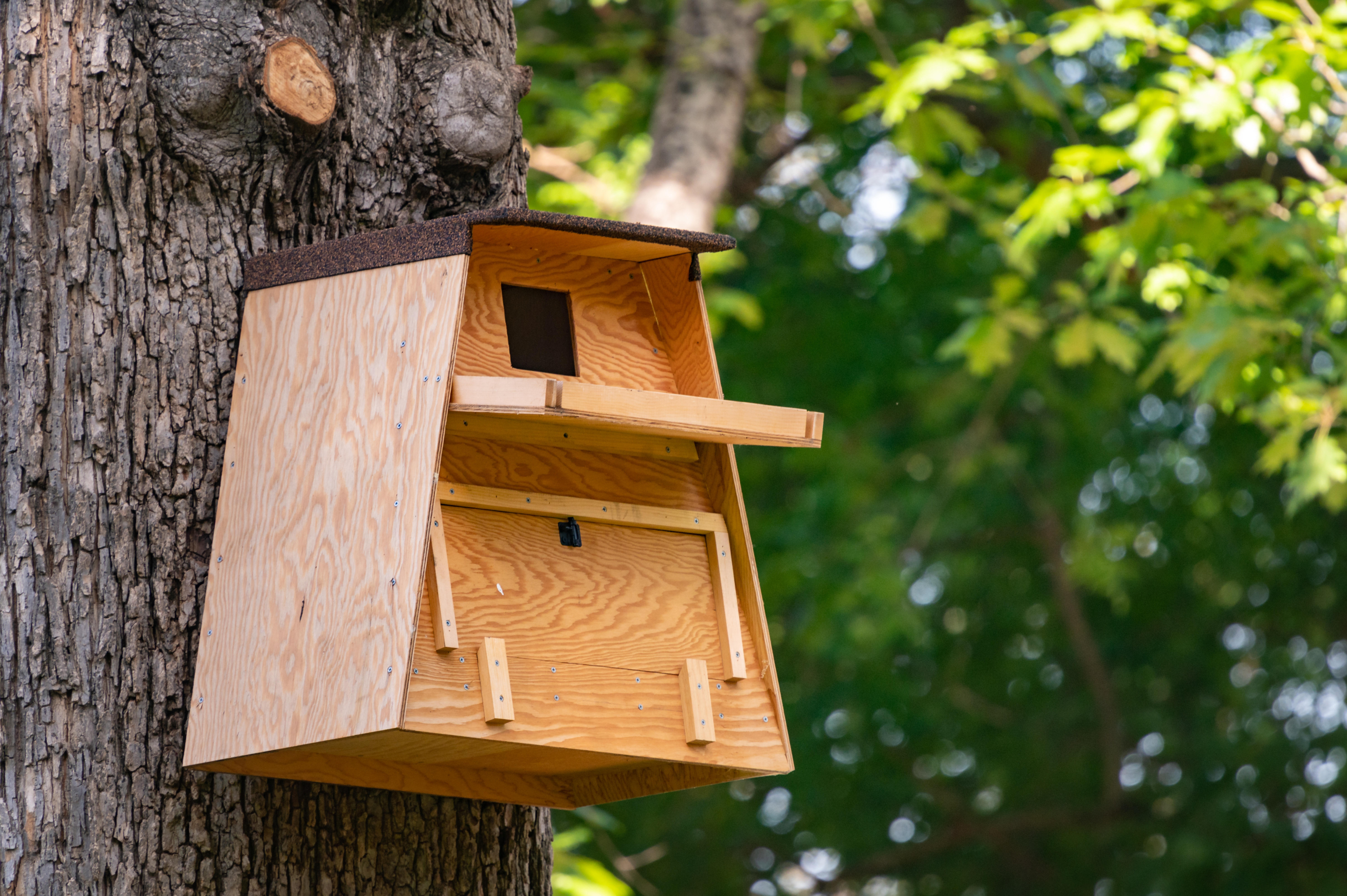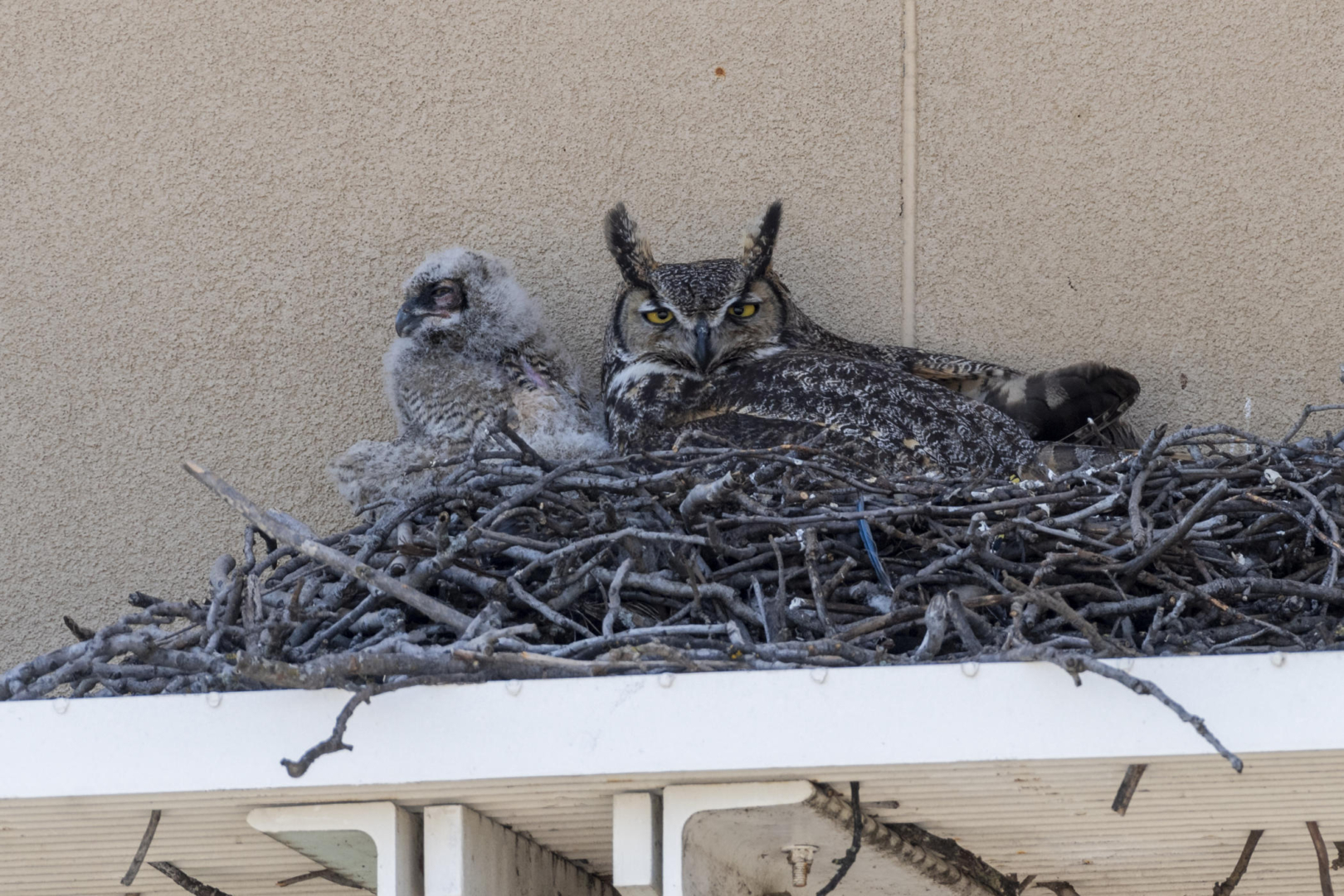How To: Enlist Owls for Pest Control

Owl boxes that were built by Facilities Management and Services carpenters are seen suspended in the trees on Friday, May 14, 2021 in Chico, Calif. It’s been a banner year for gopher damage across campus, and FMS is hoping the boxes will have enough curb appeal to bring new owls to campus to help us control and ultimately defeat the gophers! The owl helpers are a great, non-toxic pest control method. (Jason Halley/University Photographer/CSU, Chico)
Chico State recently experienced a population explosion of pocket gophers, filling our lawns and athletic fields with holes and tunnels. Wanting to avoid poisons, which can hurt hawks and owls who make gophers part of their diet, Facilities Management and Services (FMS) decided to tap the flighted predators for assistance.
In spring 2020, eight barn owl boxes were deployed in trees across campus, attracting more of the raptors, and their presence seems to be reducing the gopher population.
Interested in making owl homes of your own? Mike Alonzo (Agriculture, ’07), manager of grounds and landscape services, has a few tips.
Location, location, location.
As with real estate, setting is most important. Find a place where the owls are protected from prevailing winds but can still see their hunting grounds. Avoid nearby vehicle traffic and noisy spots. We’ve found 25 feet or so high in our valley oaks is a choice spot.
Pick a design with good curb appeal.
Designs can change based on the kind of owl you want to attract. For barn owls, it should have enough room for
the hungry hunters to stand inside (about 2 feet tall, and 1 ½ feet wide is good), have a solid landing tray and entrance hole, and include an inspection flap so you can spy inside as needed.
For those without a woodshop or neighborhood carpenter—the talented FMS Carpentry Shop put ours together—you can find several kits online. Many require some assembly but at least arrive pre-cut with hardware and instructions!

Monitor for results!
Listen or watch for the owls at dusk. You also can peek inside to see if an owl has moved in, or look for “owl pellets” below the box. Regurgitated bits of fur, bones, and other digested bits are proof they are feasting happily. Given our success so far, we might experiment with horned owl boxes next!


